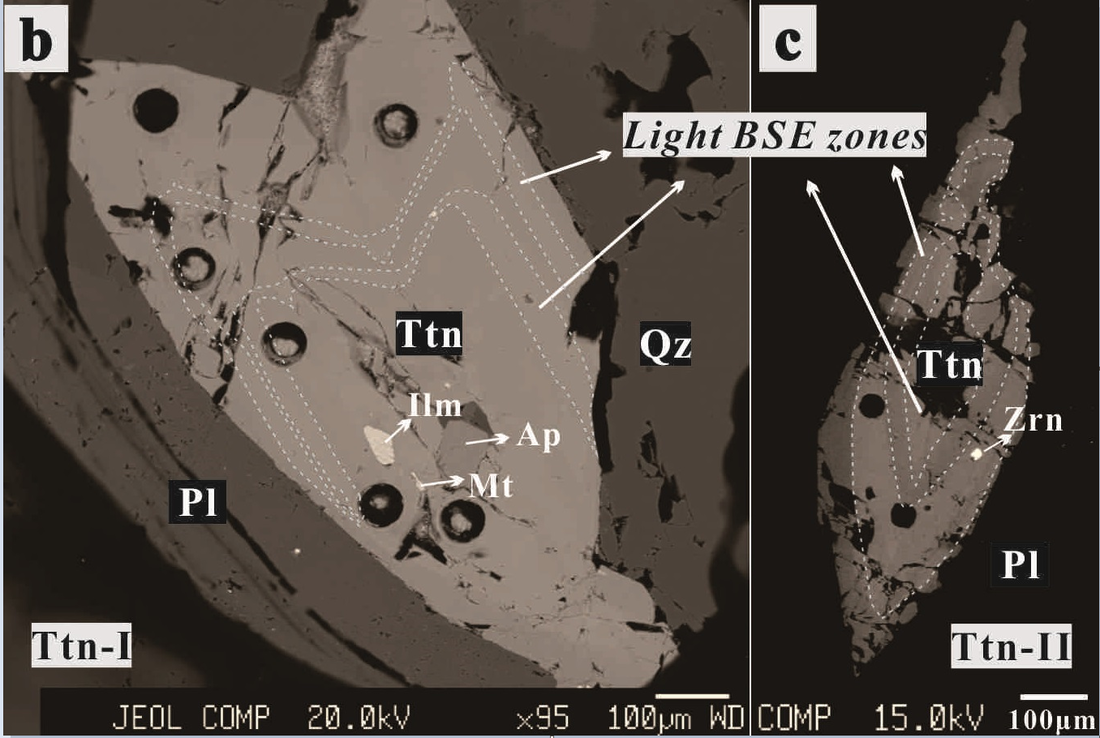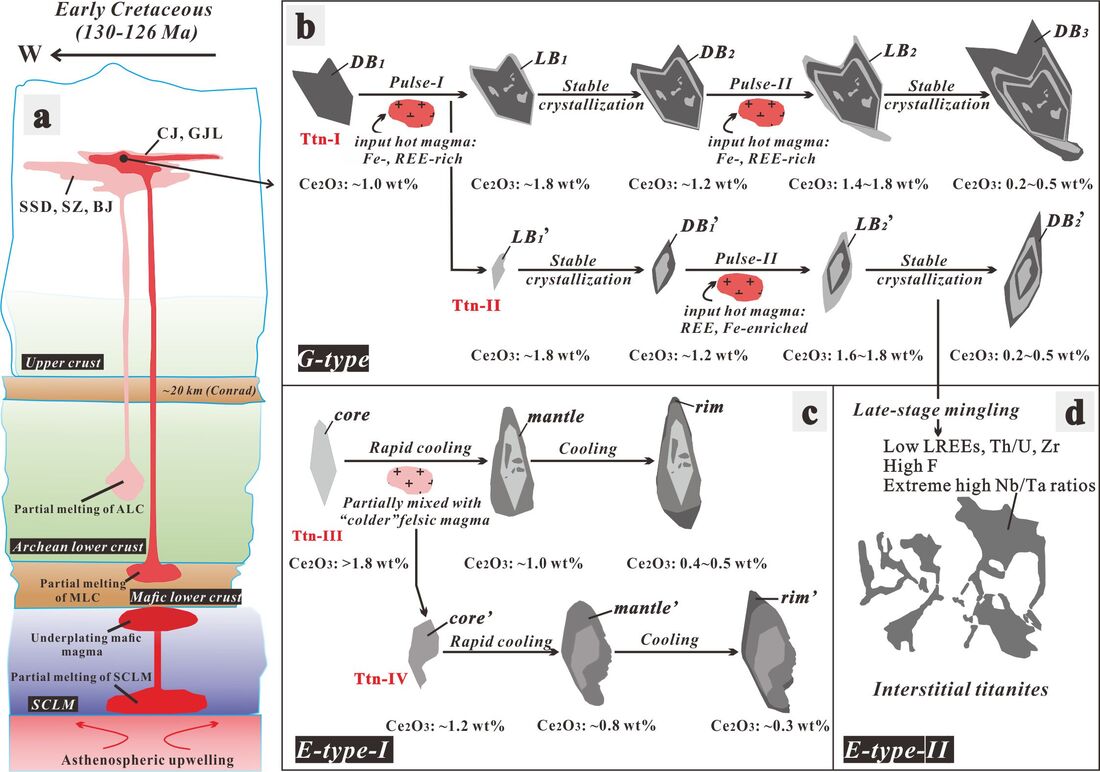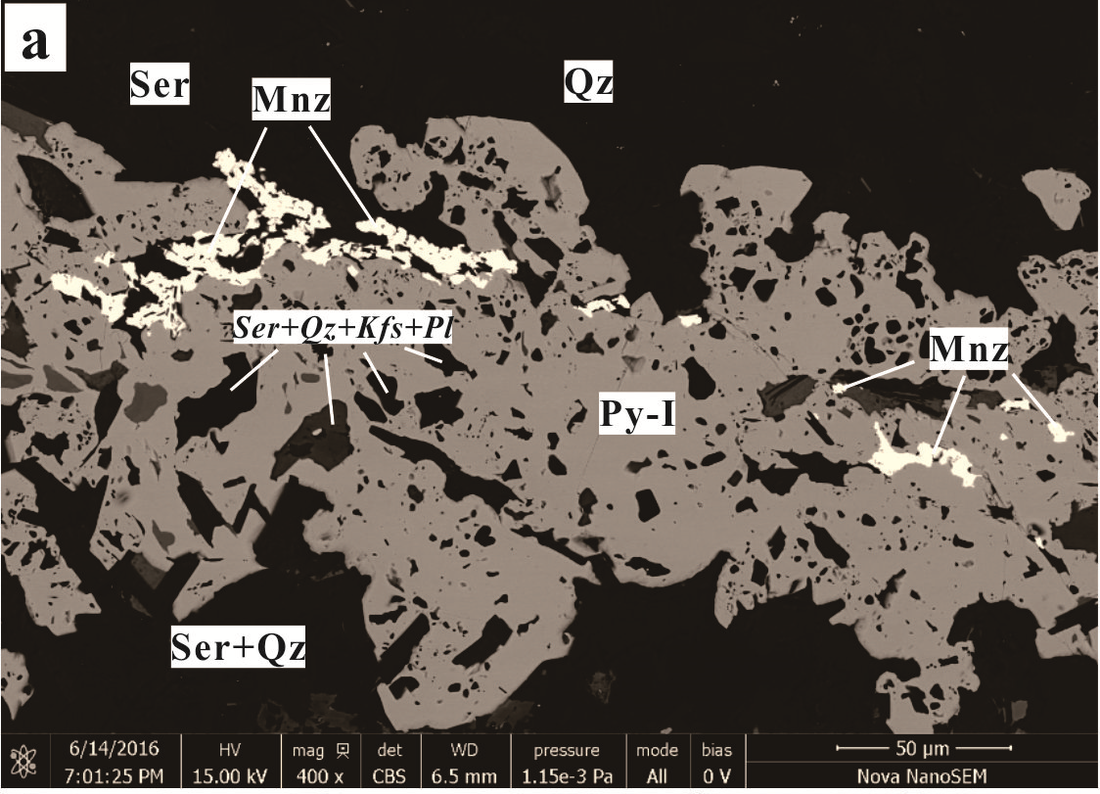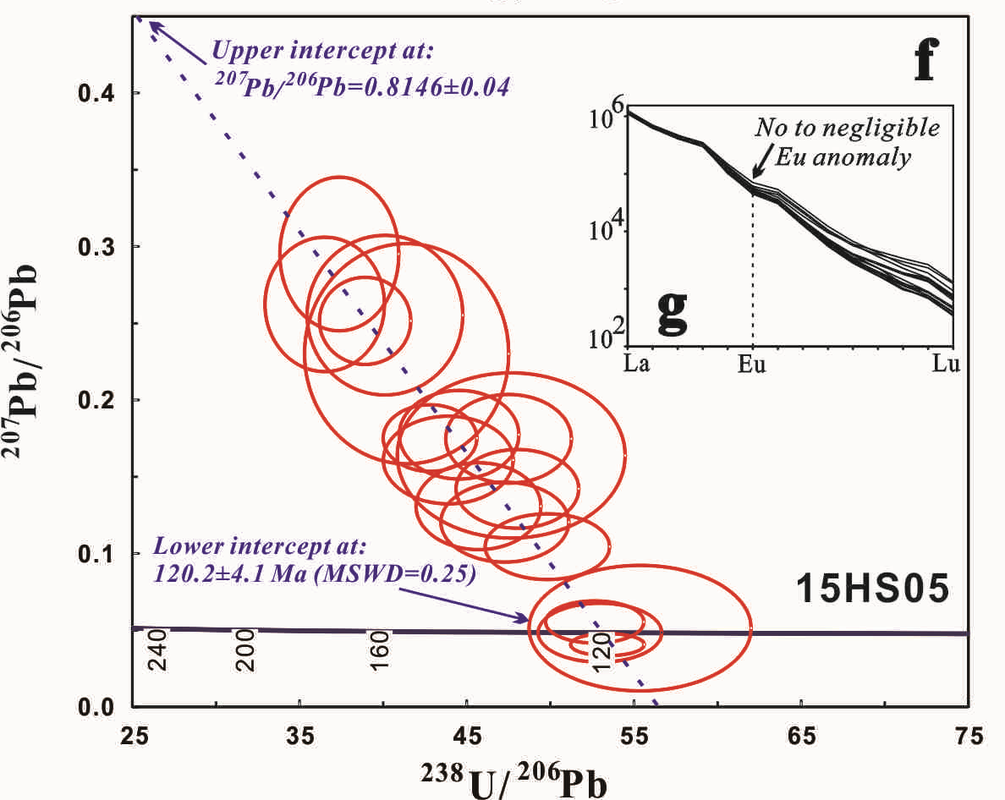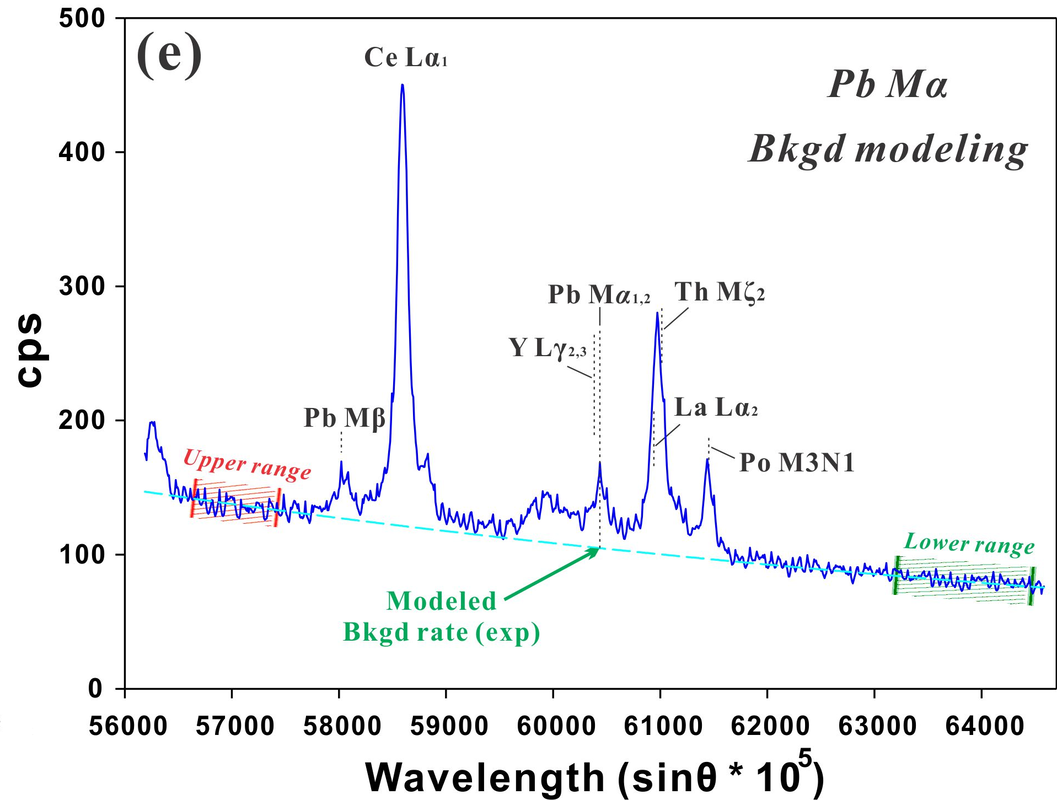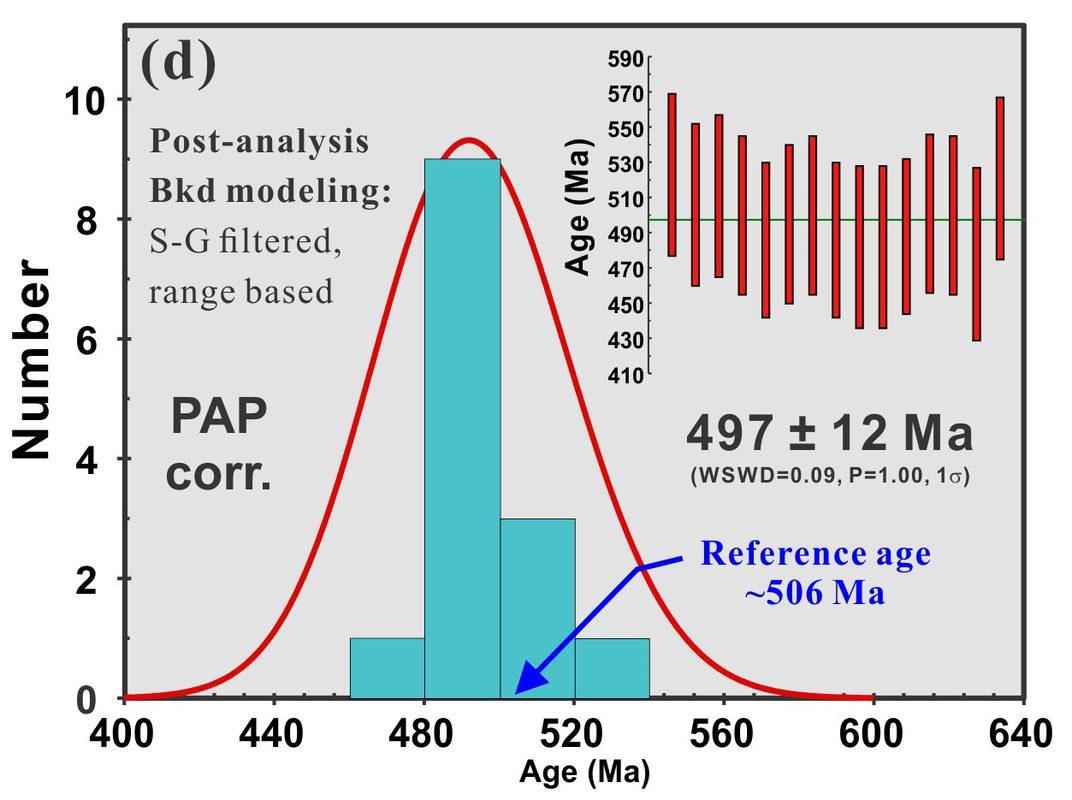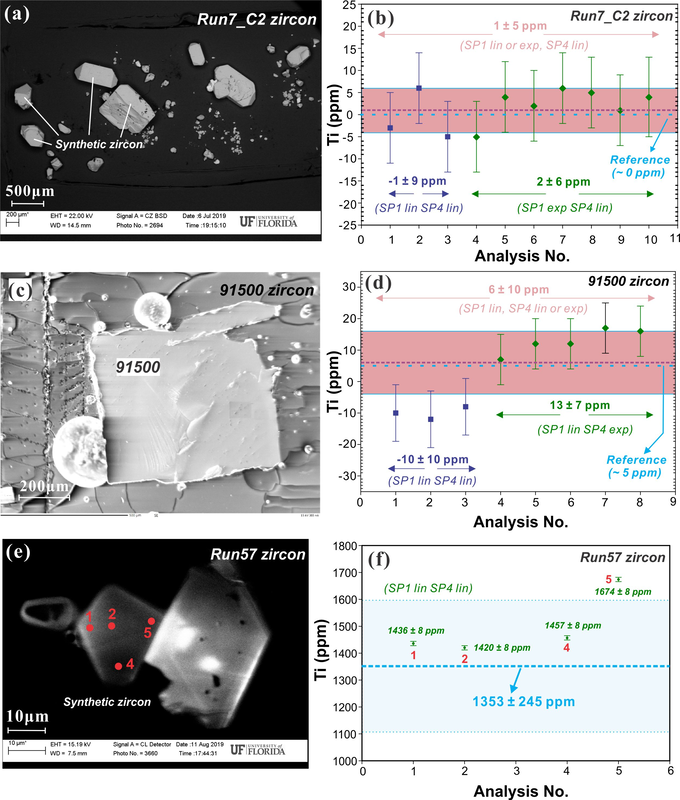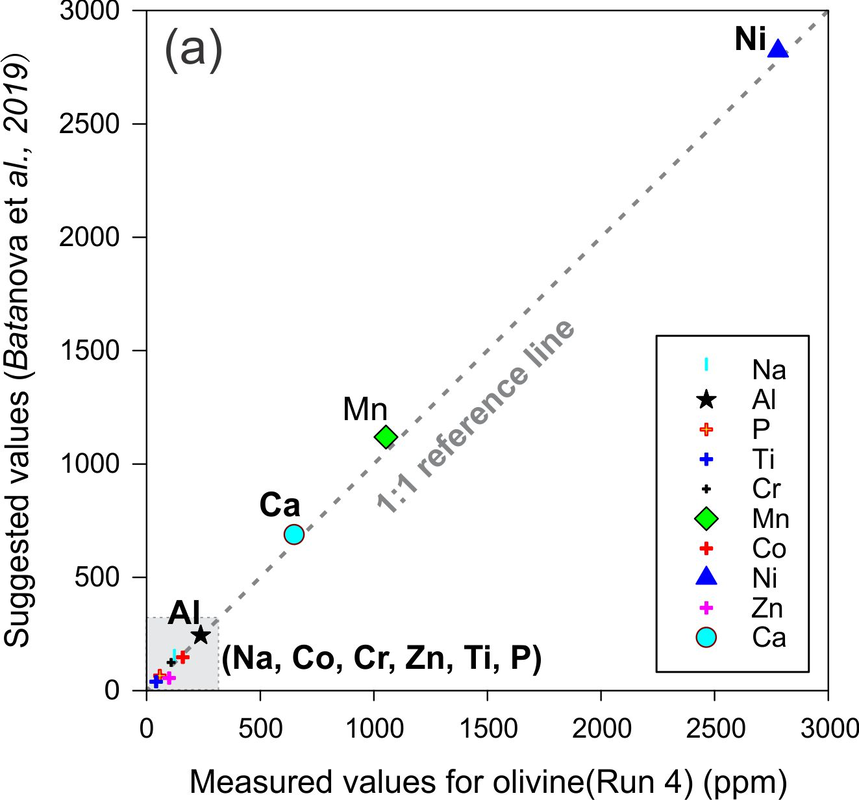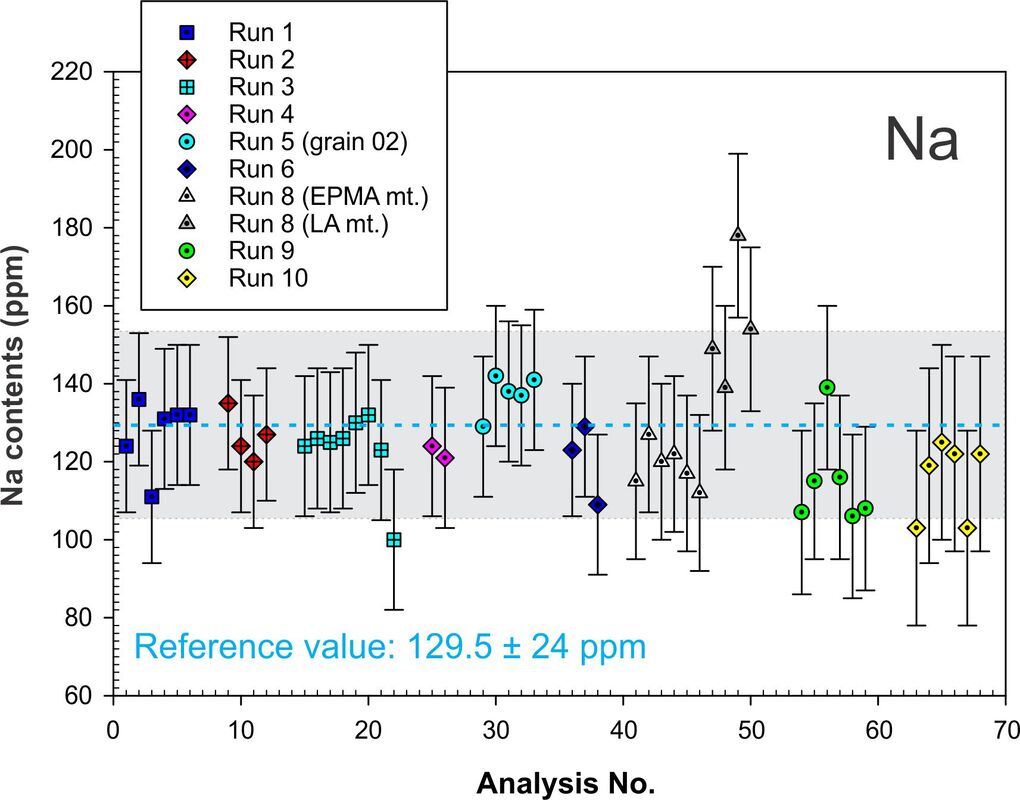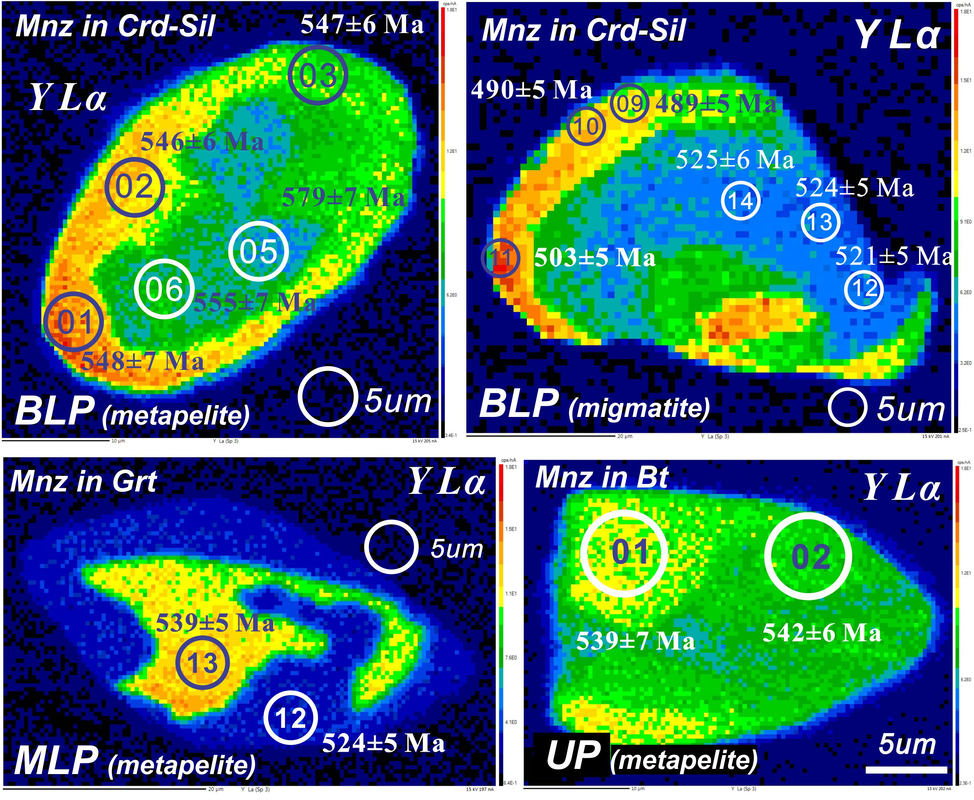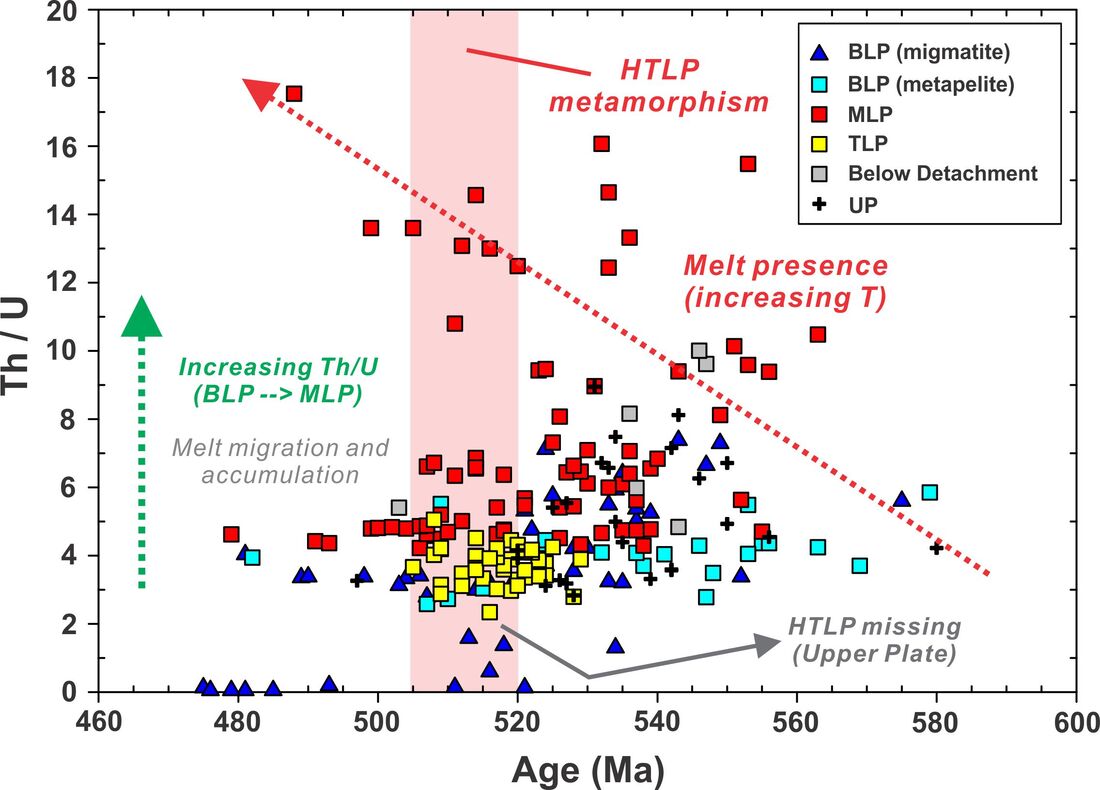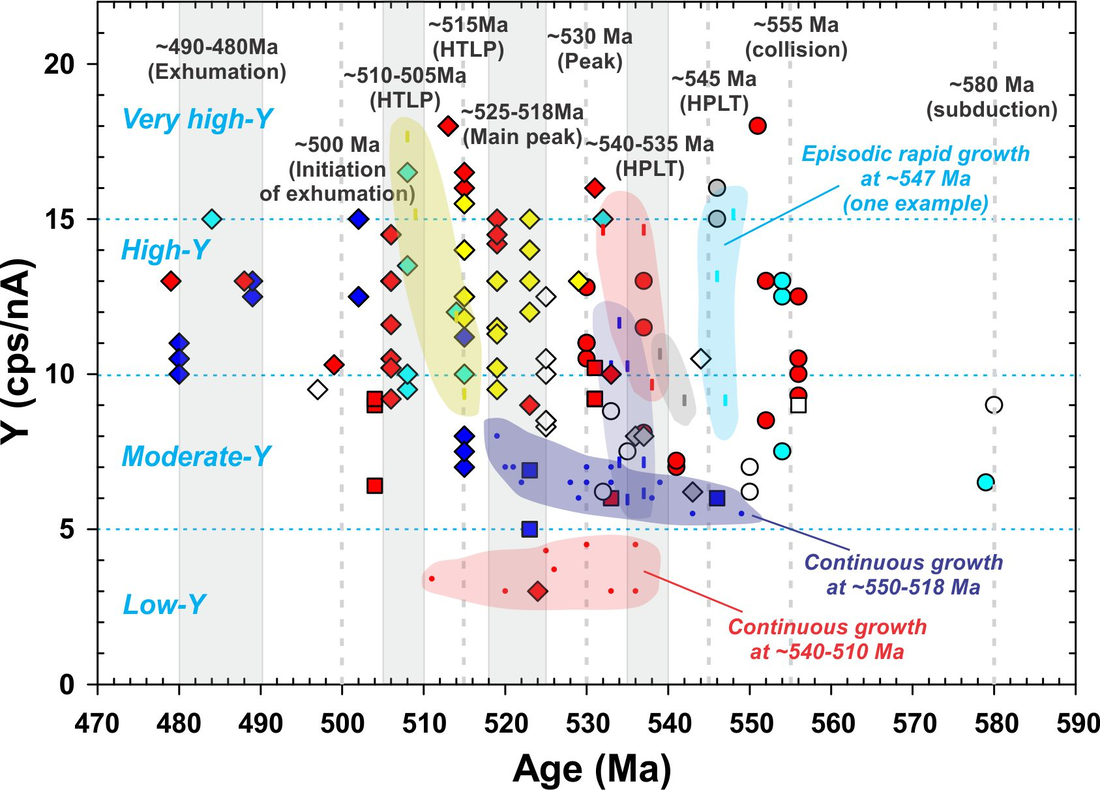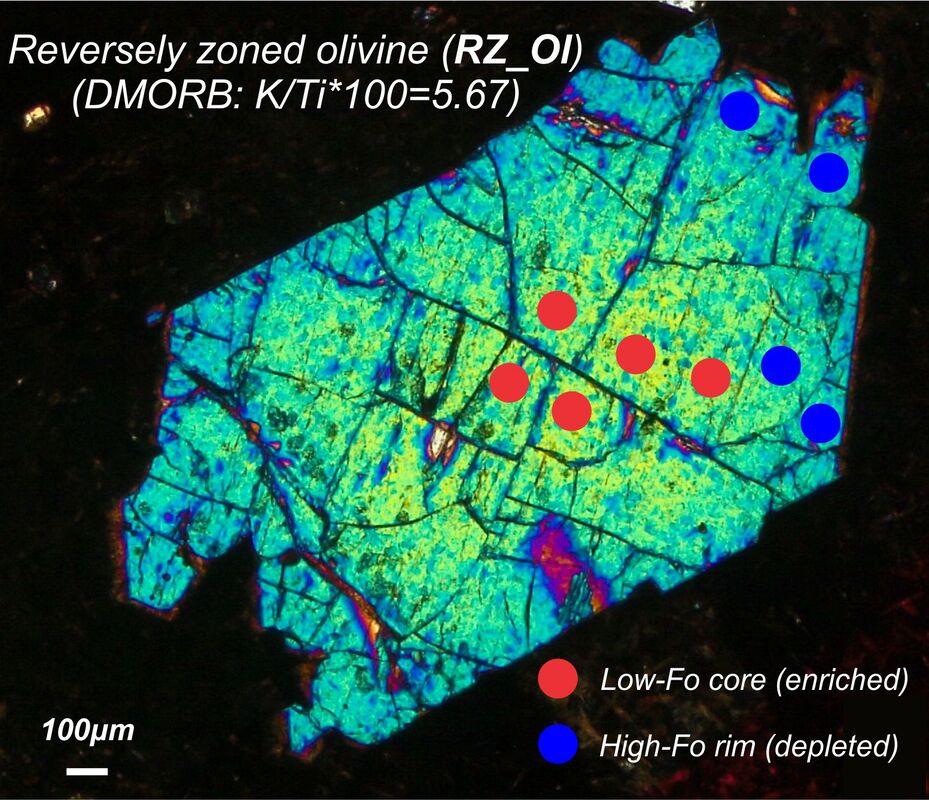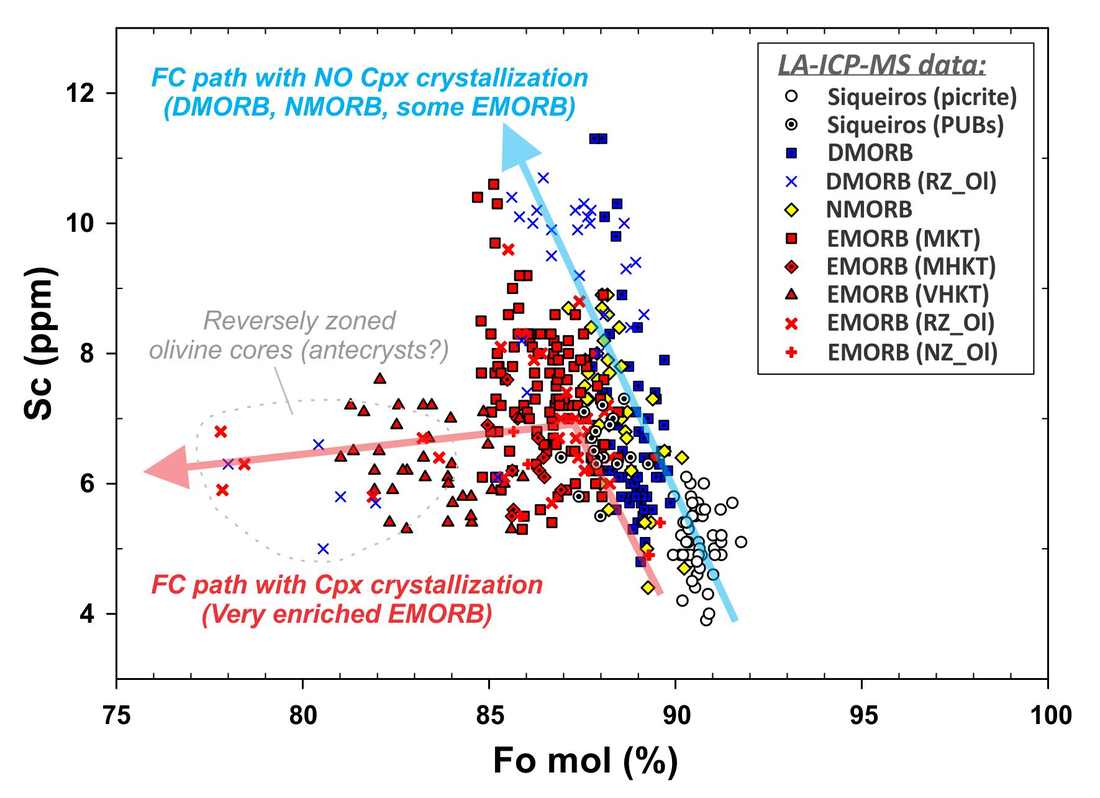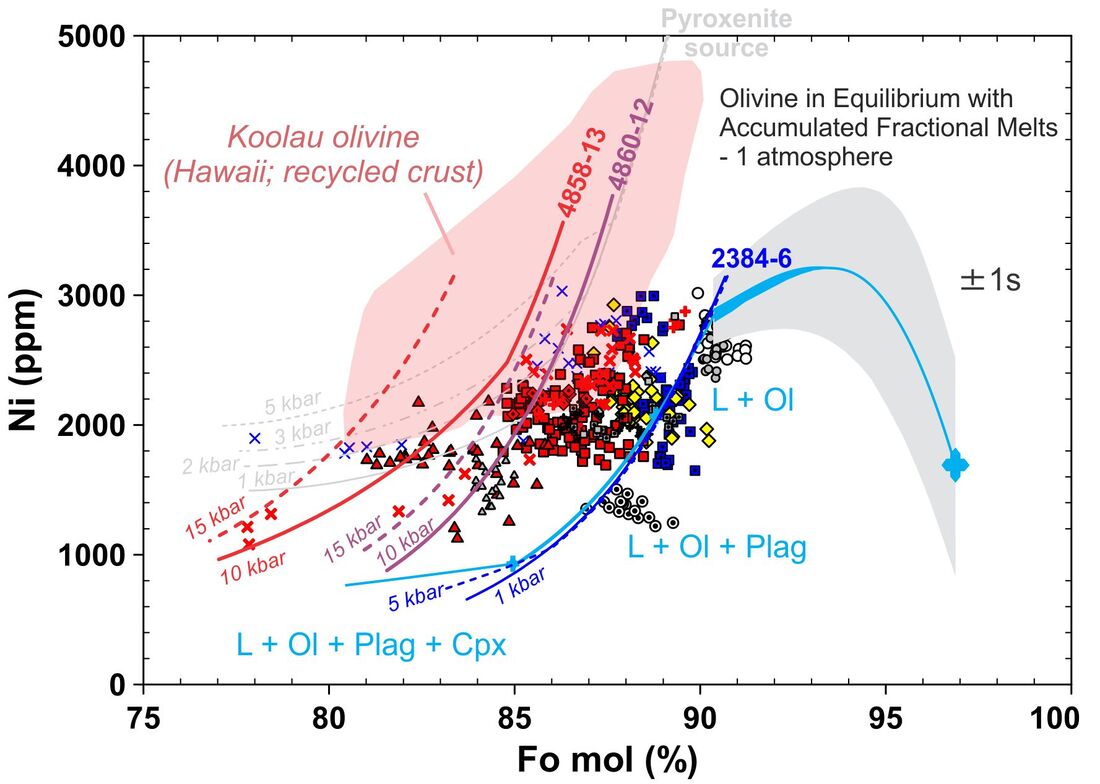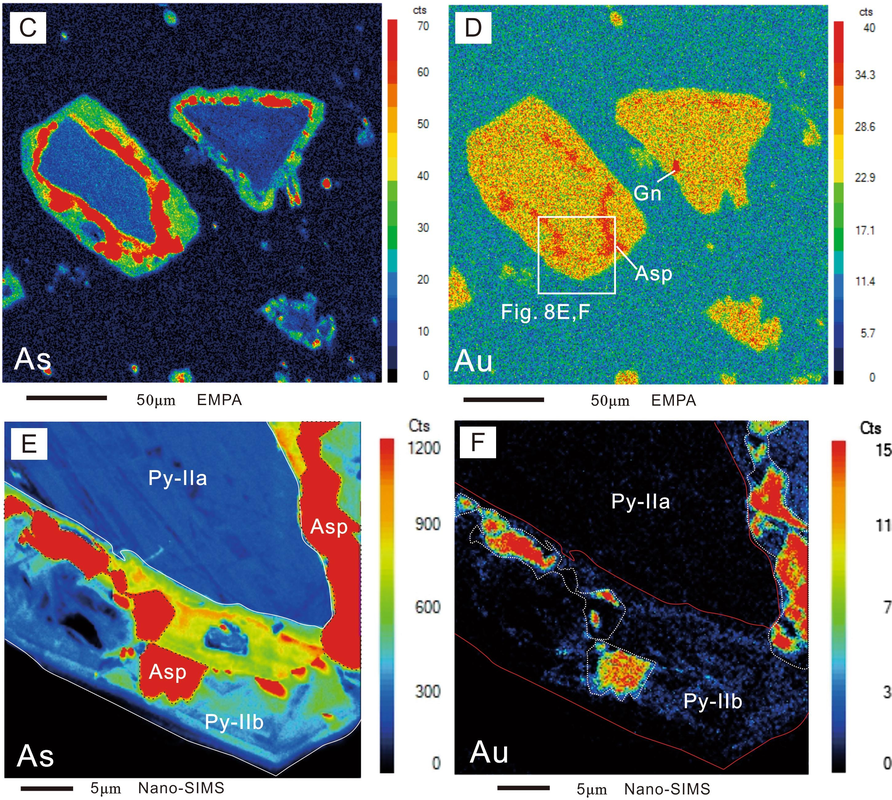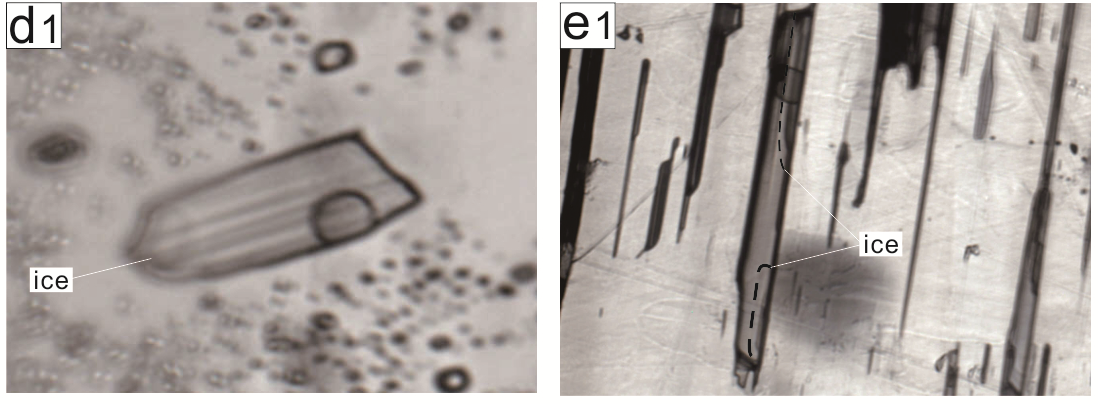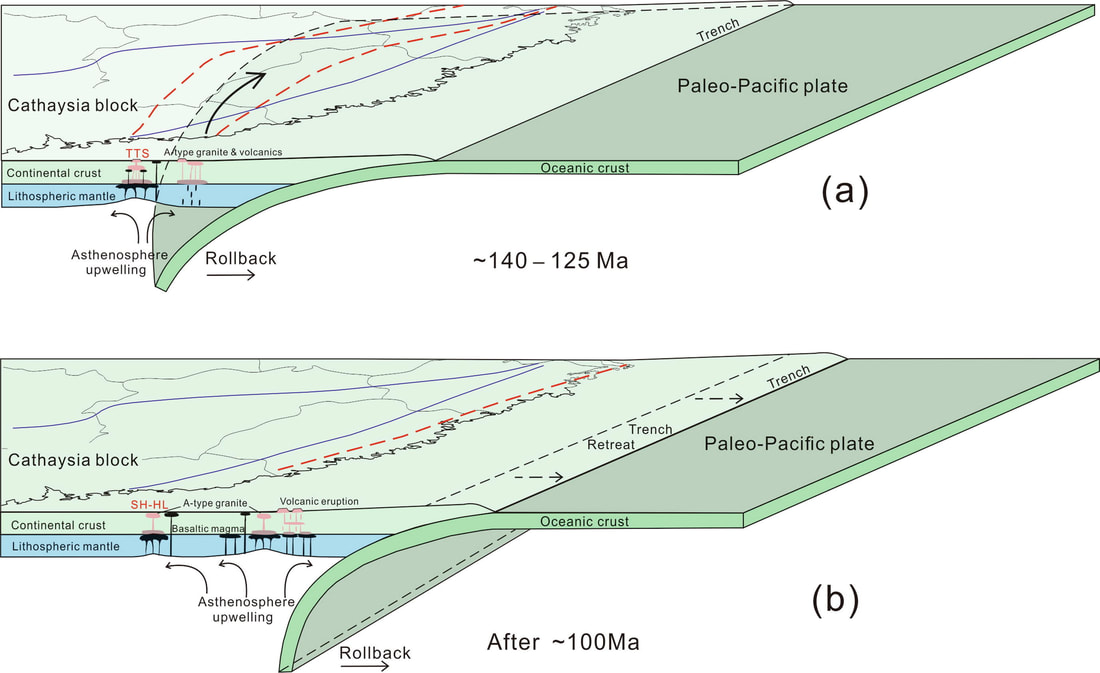Research Overview
My biggest research interests in geology are to explore details of fine-scale mineral growth and gain insights into larger scale magmatic, hydrothermal, and metamorphic histories, and unravel plate-scale tectonic evolution. As whole-rock analyses in many cases provide us the "average" compositions, they could potentially mask some detailed geologic information and corresponding geologic events. However, many major and accessory minerals can preserve the key information in their fine-scale textural and geochemical (elemental and isotopic) zonation.
My principal goals are to: 1) find out what geologic information can be extracted from mineral textures (including correlations with other mineral phases, internal growth zonation, and fluid, melt and mineral inclusions) and their geochemical compositions; 2) explore what minerals can potentially record complicated geologic histories without being homogenized; 3) develop and apply novel in-situ analytical techniques to best reveal mineral growth information; and 4) integrate mineral study with thermodynamic-geochemical modeling and experimental mineralogy, petrology and geochemistry to gain insights into current big scientific questions.
Over the past ten years, I have used accessory mineral petrochronology and non-chronometric mineral microgeochemistry to decipher details of magmatic, hydrothermal and metamorphic processes in various tectonic settings (e.g., Craton, Subduction zone, Orogen, Mid-ocean ridges, Transform faults, Hotspots). In addition, I work extensively on in-situ method developments. My research projects at UHM will be the continuing and expanded research interests based on some of the projects listed below:
My principal goals are to: 1) find out what geologic information can be extracted from mineral textures (including correlations with other mineral phases, internal growth zonation, and fluid, melt and mineral inclusions) and their geochemical compositions; 2) explore what minerals can potentially record complicated geologic histories without being homogenized; 3) develop and apply novel in-situ analytical techniques to best reveal mineral growth information; and 4) integrate mineral study with thermodynamic-geochemical modeling and experimental mineralogy, petrology and geochemistry to gain insights into current big scientific questions.
Over the past ten years, I have used accessory mineral petrochronology and non-chronometric mineral microgeochemistry to decipher details of magmatic, hydrothermal and metamorphic processes in various tectonic settings (e.g., Craton, Subduction zone, Orogen, Mid-ocean ridges, Transform faults, Hotspots). In addition, I work extensively on in-situ method developments. My research projects at UHM will be the continuing and expanded research interests based on some of the projects listed below:
- 1) Titanite petrochronology study to unravel tectono-magmatic evolution in Jiaodong Peninsula, during the destruction of North China Craton (NCC).
- 2) Hydrothermal monazite and metal sulfides geochemical study to constrain timing and mechanisms of giant gold mineralization in Jiaodong Peninsula during the destruction of NCC.
- 3) Method developments on in-situ high spatial resolution EPMA minor and trace analyses on accessory minerals (monazite, zircon, quartz, olivine, etc.) and high spatial resolution LA-MC-ICP-MS monazite U-Th-Pb isotopic dating.
- 4) Monazite petrochronology study in Damara Orogen to gain insights for monazite growth mechanism and tectonic evolution.
- 5) Olivine-spinel geochemistry study of extremely heterogeneous MORB samples in East Pacific Rise (EPR) and Siqueiros Transform to understand underlying mantle source characteristics, mantle metasomatism history, and regional magmatic differentiation.
- 6) Phenocrysts (olivine, pyroxene, plagioclase) textural and geochemical (elemental and isotopic) studies on basaltic and andesitic lavas in Axial Volcano and South Cleft of the Juan de Fuca Ridge to understand oceanic magmatism and mantle geochemistry.
- 7) Phase chemistry and diffusion modeling on phenocrysts from Hawaii volcanoes (e.g., Honolulu Volcanics) to constrain mantle geochemistry, magma evolution and timescales of magmatic chamber processes and eruption.
Titanite Petrochronology Study
|
In magmatic system (Jiaodong terrane, North China Craton, NCC)
Titanite is a common accessory mineral phase in igneous and metamorphic rocks. Because of its capability to preserve timing and physico-chemical conditions (P-T-x) of mineral growth during tectono-magmatic evolution, it has been drawing increasing attention and being applied to different geologic regions worldwide. In this study, I used titanite as a "probe" to unravel the tectono-magmatic evolution during the peak destruction of the North China Craton (NCC). The contrasting chemical zonations of titanite in host granodiorite and dioritic enclaves preserve direct records of the chemical and temperature changes of the host felsic magma and the injected Fe-, REE-rich dioritic magma. In-situ U-Pb dating, minor and trace element, and Nd isotopic analyses of these titanites provide strong evidence of multi-stage magma mixing during Early Cretaceous (130-126 Ma), where the melting of Archean lower crust and juvenile mafic lower crust took place, revealing a lower crust reactivation process as a response to the peak NCC destruction. |
|
Monazite & Metal Sulfides Study |
|
In hydrothermal system (Jiaodong giant gold deposits, North China Craton)
The world-class giant gold province (>5,000 t) in Jiaodong Peninsula has attracted extensive studies for decades. However, the timing of gold mineralization is not well constrained and the mechanisms of gold deposition are hotly debated. In this study, I discovered some hydrothermal monazite grains closely associated with ore-forming minerals and constrained the gold mineralization at ~120 Ma via in-situ LA-ICP-MS dating. Combined with monazite growth textures, and in-situ LA-MC-ICP-MS Nd isotopic analyses, I propose that the intrusive granite body underneath contributed materials (e.g., REEs) into the ore-forming hydrothermal fluids, which promoted formation of hydrothermal monazite. Field observations, ore minerals petrography, and in-situ SIMS pyrite sulfur studies unraveled a metallogenic environment transition from early-stage compressional, reduced to late-stage extensional, oxidized at ~120 Ma, as a response to tectonic transition due to continuous shifts of the drifting direction of the paleo-Pacific Plate. The oxidized condition helped remobilize gold from early-stage crystallized pyrite and re-precipitate in late stage, forming high-grade gold deposit in the central metallogenic belt of Jiaodong terrane. |
Method Developments |
|
Monazite U-Th-Pb chemical and isotopic dating via EPMA and LA-MC-ICP-MS
As a common accessory mineral in various types of rocks, monazite shows its great significance as a thermometer, a geochronometer, and a petrogenetic indicator. Because monazite can have very complicated growth zones (esp. <5μm), high spatial resolution is required to obtain in-situ geochemical compositions to decipher details of mineral growth. In this study, I managed to test, evaluate and improve the data precision and accuracy of monazite EPMA U-Th-Pb chemical dating under high spatial resolution (i.e., 1-2μm interactive volume with a focused beam). The detection limits of Th, U and Pb were decreased to ~90 ppm, ~50 ppm, and ~35ppm, respectively, by applying optimized beam conditions. By using well-designed pre-experiment sample treatment and an Improved Background Method (IBM) along with a PAP matrix correction method, I have significantly improved the accuracy of the data, obtaining chemical ages of Moacyr monazite standard consistent with reference values. High spatial resolution (5μm) in-situ monazite LA-MC-ICP-MS (3rd-generation Nu-Plasma ) isotopic dating was also developed, using multiple monazite age references (i.e., Moacyr, Bananeira, Itambé, Diamantina) for primary standardization and data correction. This in-situ method can help analyze monazite samples with small growth zones (>5μm) as an addition to the EPMA technique. Read more...
|
Method Developments
|
EPMA zircon and quartz Ti analysis
Temperature constraint is vital for geologic processes, either in hydrothermal, magmatic or metamorphic systems. Thermometers such as Ti-in-zircon, Ti-in-quartz, Zr-in-rutile, Zr-in-titanite, are being applied to a variety of geologic samples. In this study, I attempted to develop protocols for high spatial resolution (<5μm) EPMA zircon and quartz Ti analysis with sufficiently high precision and data accuracy, so as to apply to complexly zoned thermometers. In this study, I managed to obtain a low detection limit of Ti down to 6 ppm (potentially down to 2-3 ppm) by applying high beam currents, long peak counting time and multiple spectrometers' counting. Using detailed WDS step scan for appropriate background offsets estimation and applying a selection of exponential and linear background regression on multiple spectrometers, I successfully measured Ti-free synthetic zircon and natural 91500 zircon that have very low Ti contents (i.e., ~0 ppm and ~5 ppm), with good data consistency and accuracy. This development work makes it possible for EPMA to analyze low-temperature zircons. The proposed protocols in this study can potentially be applied to other common thermometers such as Zr-in-rutile, Zr-in-titanite, Al-in-olivine, etc., to constrain key thermal history in various geologic settings. Read more...
|
Figures above present EPMA Ti analyses by varying background regression methods on three zircon reference materials, i.e., Run7_C2 (Ti-free), 91500 zircon, and Run57 (high-Ti). Manuscript (Jiang et al.) in revision in Chemical Geology.
|
Method Developments |
|
Figures above show EPMA data accuracy evaluation on 10 minor and trace elements in MongOlSh11-2 olivine, with Na as one example. (Jiang et al., 2022, Chemical Geology).
|
High precision and high accuracy EPMA olivine minor and trace element analyses
As a major mineral component in Earth’s mantle and in most cases the first silicate mineral phase to crystallize from mantle-derived melts, olivine has great potentials to trace mantle physico-chemical properties (P-T-x), mantle metasomatic history, and magma differentiation. In this study, my goal is to develop protocols for high spatial resolution, high precision and high accuracy olivine minor and trace element analyses via EPMA. Apart from some major elements such as Mg, Fe and Si, I tested and evaluated 10 minor and trace elements, including Na, Al, P, Ca, Ti, Cr, Mn, Co, Ni, and Zn. In order to obtain data with sufficiently high precision and accuracy, a series of tests (14 runs) were performed on international olivine standard named as MongOlSh11-2, by changing beam conditions, accelerating voltage, peak counting time, background offsets and regression models, and primary calibration standards. Systematic tests have significantly improved overall data accuracy for most minor and trace elements, showing consistent values with the references (see figures on the left), with good data reproducibility. Preliminary EPMA analysis on unknown olivine samples from Siqueiros Transform yields consistent data with French international electron microprobe lab (ISTerre, Grenoble), confirming applicability of the developed analytical protocols. Read more...
|
Monazite Petrochronology Study
|
In metamorphic system (Damara Orogenic Belt, Namibia)
As monazite can readily grow in a variety of P-T conditions, it shows great potentials in tracing multi-stage metamorphic and deformation events during an orogenic cycle. In this study, I chose monazite-bearing migmatite and metapelite samples from different structural levels in the central zone of Damara Orogenic Belt (a hot orogen), and made systematic petrographic observations, EPMA X-ray mapping (Th-U-Ce-Y), and in-situ high spatial resolution (5μm) Th-U-Pb dating. The coupled Th-U-Ce-Y chemical zonations and U-Pb dates of monazite record over ten episodes of growth within the entire orogenic cycle (over 100 m.y.): from the pre-Damara subduction (~580-570 Ma) to late-stage exhumation (490-480 Ma). However, monazites at different structural levels recorded varying growth patterns as response to tectonic activities of upper and lower plates. While the deepest level of the plate experienced full metamorphic histories of the orogenic cycle, the shallowest level experienced a ~20 m.y. hiatus (~520-500 Ma, HTLP metamorphism) until late-stage reactivation. The Yttrium (Y) - Age correlations of monazite unravel rapid, episodic monazite growth (rapid Y increase) and continuous monazite growth (stable Y content) within the orogenic cycle. Along with Th-U X-ray maps and Th/U ratios, the Y-Age correlations implicate the decompression, heating, and melt fluxing (melt migration and accumulation) events that generated growth/breakdown of monazite and garnet throughout the process. Five types of coupled Th-U-Y-Ce chemical zonations were identified in all monazites, along with some "mysteriously" decoupled zonations, which, combined with U-Pb dates, provide insights into monazite overall growth mechanisms, where dissolution, recrystallization, fluid-aided post-growth alteration and accompanying element (re-)distribution took place. These insights can help improve our understanding of monazite petrochronology. This study also provides an excellent case study of unraveling orogenic evolution from monazite perspective. Read more...
|
|
Olivine Geochemistry Study
|
In magmatic system (East Pacific Rise, EPR)
Mantle melting, magmatic differentiation, melt migration and eventual eruption at mid-ocean ridges (MORs) are important geological process that control the formation of a majority of Earth's oceanic crust. The East Pacific Rise (EPR) is one of the fast spreading ridges that attract geologists' interests and extensive research for decades. However, due to the magma "homogenization process" on or near the ridge axis, original melt information is easily masked, making it hard to constrain the real geological processes beneath MORs. As attempts to obtain less compromised magma information, lavas from off-axis 8°20‘ N seamount and Siqueiros Transform were collected. In this study, I selected olivine as the research focus in that it is a major mineral component in Earth's mantle and the first mineral (in most cases) to crystallize from mantle-derived melts, which makes it ideal to directly trace mantle source characteristics and magma differentiation. Systematic olivine morphology observations, EPMA X-ray mapping, and high precision EPMA and LA-ICP-MS minor and trace element analyses were performed on geochemically diverse Siqueiros picritic basalts, DMORB, NMORB, and EMORB. The restricted Mn/Fe and Zn/Fe ratios in all olivine samples indicate a peridotitic mantle source region, with no evidence for pyroxenite source involvement. Divergent trends revealed by Sc, V and P versus Fo implicate two fractional crystallization (FC) paths during magmatic differentiation, where Cpx only crystallized in highly enriched EMORBs. FC modeling further constrains that varying degrees of enriched parental magmas and deeper initial crystallization were involved to generate the observed diverse geochemical compositions of the lavas. Furthermore, the uncommon reverse olivine zonations with "extreme" chemical variations of Ca, Ni, Ti, Mn, Sc, and Fo indicate magma mixing between extremely enriched magma and very depleted magma. All the above processes provide great insights into the off-axis magma differentiation. Despite the fact that all olivine data only indicate a peridotitic mantle source for the melts, evidence also indicates that this peridotite mantle has been heterogeneously metasomatized. Some "mantle olivines" show notable enrichment of Ca and many "igneous olivines" reveal affinity with olivines observed in OIBs (Hawaii), which cannot be simply explained by FC. These observations suggest that the peridotite mantle could have been metasomatized by carbonate-silicate melts and "hotspot-like" enriched melts. Read more...
|
|
Collaborative Studies with My Colleagues |
|
Upper figure shows anomalous As-Au enrichment in gold-bearing pyrite (C-F) (via EPMA and Nano-SIMS elemental mapping). Middle figure presents fluid inclusions trapped in opaque minerals (i.e., wolframite and stibnite) (d1-e1). Lower figure shows a two-stage roll-back tectonic model for A-type granite petrogenesis in Cathaysia block, South China (a-b). For details, refer to the papers below:
(Feng, …, Jiang, 2018, JAES; Peng, …, Jiang, 2020, MD; Peng, Fan, Jiang et al., 2021, GR.) |
Jiaodong giant gold deposit study; Fluid inclusion study; A-type granite petrogenesis…
My major collaboration with colleagues focuses on gold deposits study, where we seek to constrain the timing and mechanisms of gold mineralization. As attempts to constrain the timing, we have discovered and dated hydrothermal monazite (for the first time in the Jiaodong region) closely associated with gold-hosted metal sulfides, in addition to other timing constraints such as zircon U-Pb dating on pre-ore and post-ore dykes, and molybdenite Re–Os dating on pre-ore granitic pegmatite (Ma et al., 2017). The detailed mechanisms of gold mineralization are constrained by systematic petrography, in-situ (EPMA and Nano-SIMS) elemental mapping and isotopic (sulfur) analyses on some representative gold-associated metal sulfides (such as pyrite and arsenopyrite). We find that the As-Au rich fluids played a significant role in high-grade gold mineralization (Feng et al., 2018). Another important approach is to observe and analyze fluid inclusions in ore minerals, including homogenization temperature, salinity, and overall fluid composition. Because ore minerals are opaque, we have developed protocols for infrared (IR) studies on fluid inclusions in typical opaque minerals (Peng et al., 2020). In addition to ore deposits study, I have also collaborated with my colleagues to attempt to resolve a continuing debated research topic regarding the petrogenesis and tectonic implications of the Cretaceous A-type granites in the Cathaysia block (South China). We investigated the Sr-Nd-Hf compositions of inland early Cretaceous A-type volcanic-intrusive complex and late Cretaceous plutonic syenogranites, along with Cretaceous A-type rocks in the Cathaysia block. The isotopic variations and discrepancy suggest that there was an asynchronous and asymmetric two-stage rollback of the Pacific Plate, with lower crust melting and an increasing proportion of asthenosphere material addition (Peng, Fan, Jiang et al., 2021). I am always open with new collaborations on a variety of research topics. My research experience and expertise in accessory mineral studies and in-situ analytical techniques can be of great help. If you would like to collaborate, please contact me. Read more … (Jiaodong gold deposits research)
Read more … (Collaborative studies) |
Cover photo: A monazite (Damara Orogen sample) BSE image showing observable zonations, field of view scale at ~60μm. @ 2019.04

